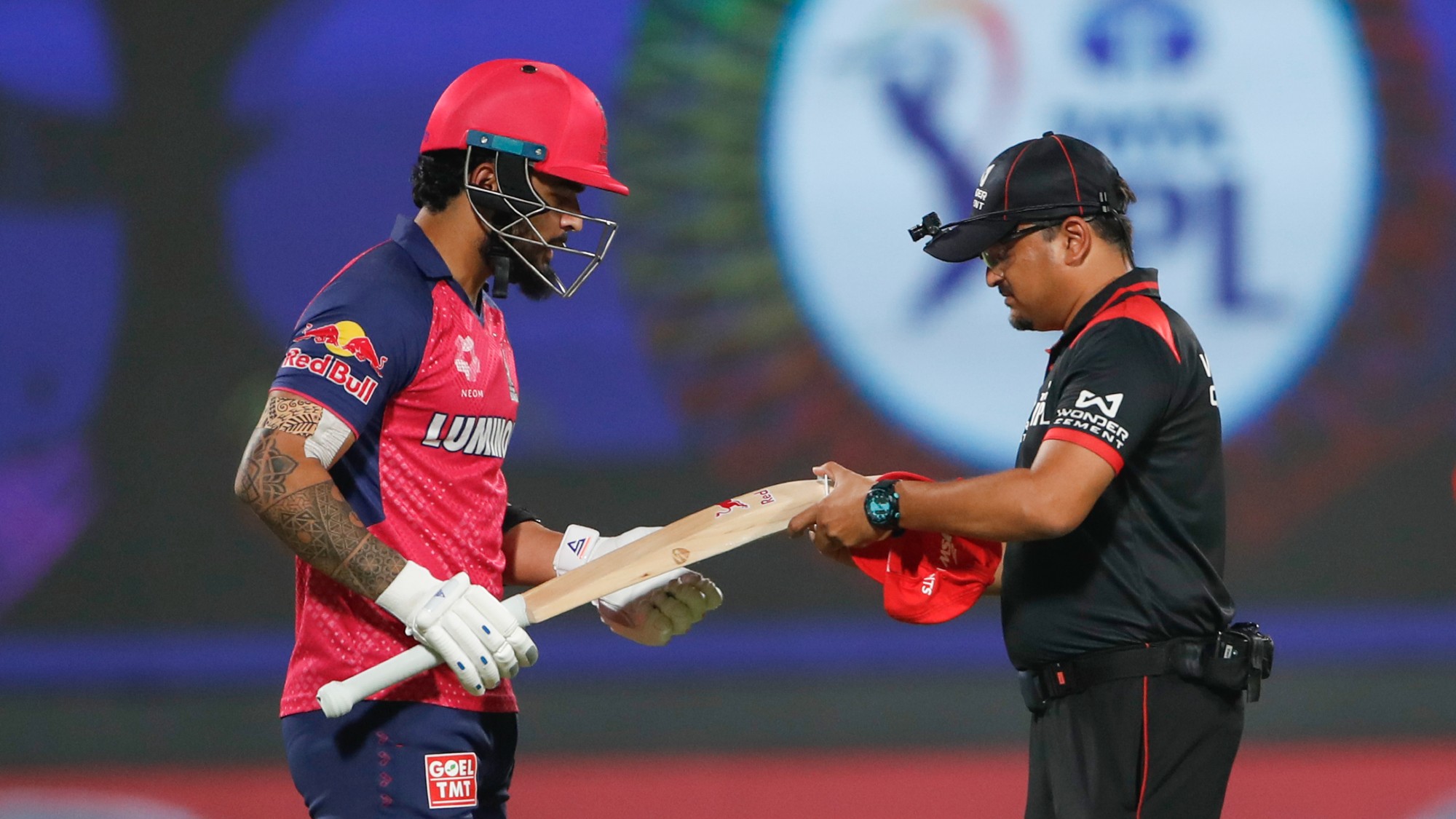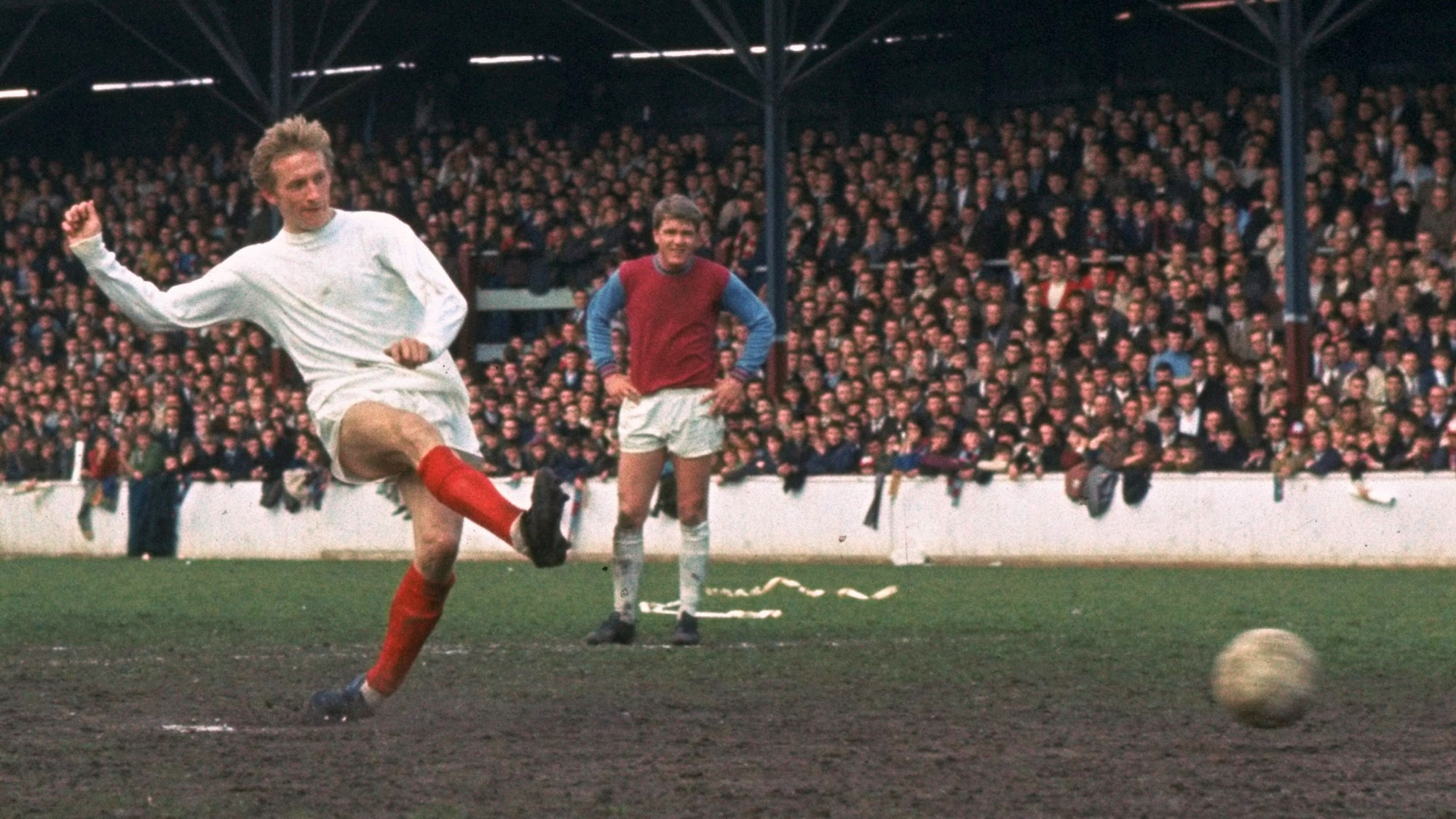Cricket's crackdown on 'monster' bats
Indian Premier League has introduced on-pitch checks to ensure bats meet strict size limits

Those watching this year's Indian Premier League (IPL) are likely to have noticed the umpires brandishing a curious new piece of kit, said Nagraj Gollapudi on ESPN. When each new batter arrives at the crease, he must insert his bat into a "rectangular implement" with a cut-out shaped like a house.
The checks, introduced on 13 April, are designed to ensure that all bats conform to a law introduced by the England and Wales Cricket Board in 2018, restricting their dimensions. The law limits the thickness of a bat's edges to 4cm, its overall depth to 6.7cm, and its width to 10.8cm.
Hitherto, the IPL's checks on bat dimensions were sporadic and took place in dressing rooms before the game. That led to claims that players were submitting one bat for checks and then going out to bat with a heftier blade. The new "live" checks, far more rigorous, have so far snared two illegal bats, both belonging to members of Kolkata Knight Riders.
The Week
Escape your echo chamber. Get the facts behind the news, plus analysis from multiple perspectives.

Sign up for The Week's Free Newsletters
From our morning news briefing to a weekly Good News Newsletter, get the best of The Week delivered directly to your inbox.
From our morning news briefing to a weekly Good News Newsletter, get the best of The Week delivered directly to your inbox.
"Bat makers have long striven for innovation," said Simon Wilde in The Sunday Times. Dennis Lillee famously used an aluminium bat in a Test against England in 1979, until Mike Brearley pointed out it was knocking the ball out of shape, and Lillee was forced to substitute it. There have been bats made of bamboo, and bats reinforced with graphite strips.
More recently, innovation has centred on adding to the blade's thickness – a development made possible by new moisture-removing techniques, which have enabled manufacturers to add depth to blades without making them impossibly heavy. An "extreme example" was David Warner's Gray-Nicolls Kaboom, whose edges were more than 5cm thick.
Such "monster" bats, which can send even mis-hit balls for six, have fuelled concerns that the game was becoming skewed in favour of batters. The 2018 law, and efforts to enforce it, are an attempt to restore a "better balance between bat and ball".
A free daily email with the biggest news stories of the day – and the best features from TheWeek.com
-
 7 bars with comforting cocktails and great hospitality
7 bars with comforting cocktails and great hospitalitythe week recommends Winter is a fine time for going out and drinking up
-
 7 recipes that meet you wherever you are during winter
7 recipes that meet you wherever you are during winterthe week recommends Low-key January and decadent holiday eating are all accounted for
-
 Nine best TV shows of the year
Nine best TV shows of the yearThe Week Recommends From Adolescence to Amandaland
-
 Hulk Hogan
Hulk HoganFeature The pro wrestler who turned heel in art and life
-
 The Masters: Rory McIlroy finally banishes his demons
The Masters: Rory McIlroy finally banishes his demonsIn the Spotlight McIlroy's grand slam triumph will go down as 'one of the greatest and most courageous victories in the history of golf'
-
 George Foreman: The boxing champ who reinvented home grills
George Foreman: The boxing champ who reinvented home grillsFeature He helped define boxing’s golden era
-
 Why Jannik Sinner's ban has divided the tennis world
Why Jannik Sinner's ban has divided the tennis worldIn the Spotlight The timing of the suspension handed down to the world's best male tennis player has been met with scepticism
-
 When 'a kiss is not a kiss': Spanish football on trial
When 'a kiss is not a kiss': Spanish football on trialTalking Point Luis Rubiales faces up to two-and-a-half years in jail if convicted of sexually assaulting footballer Jenni Hermoso
-
 Denis Law obituary: fond farewell to 'the King of the Stretford End'
Denis Law obituary: fond farewell to 'the King of the Stretford End'In the Spotlight Scottish footballer who was one of Manchester United's 'Holy Trinity' has died aged 84
-
 Why Man United finally lost patience with ten Hag
Why Man United finally lost patience with ten HagTalking Point After another loss United sacked ten Hag in hopes of success in the Champion's League
-
 Geoff Capes obituary: shot-putter who became the World’s Strongest Man
Geoff Capes obituary: shot-putter who became the World’s Strongest ManIn the Spotlight The 'mighty figure' was a two-time Commonwealth Champion and world-record holder